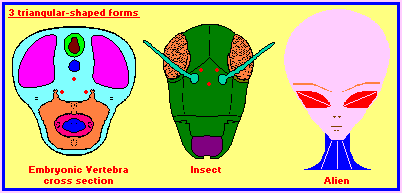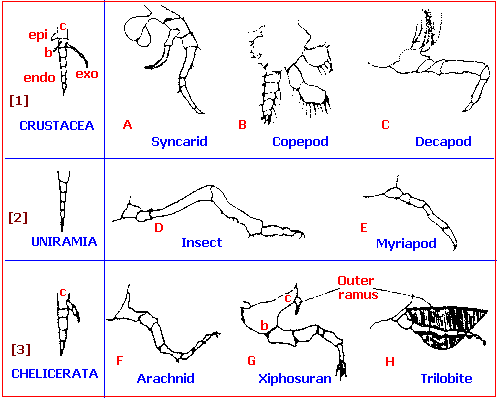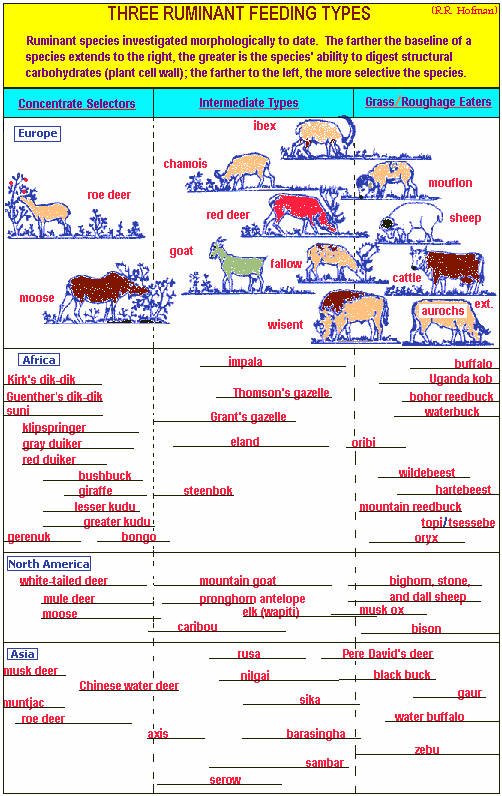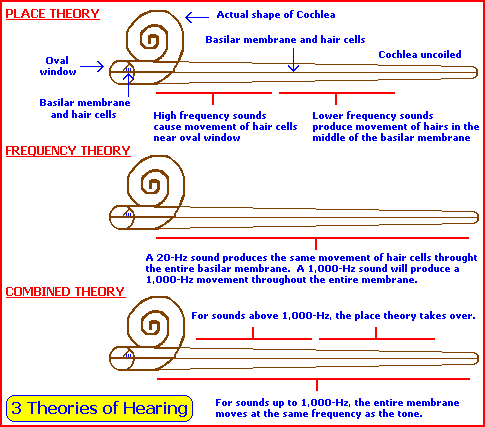 |
Buckland's Third Revolution Poster 2nd Column |
 |
(Threesology Research Journal)
http://threesology.org
| BTR column 1 | BTR column 2 | BTR column 3 | BTR column 4 | BTR column 5 | BTR column 6 | BTR column 7 | BTR column 8 | Images of posters |
Visitors as of March 28th 2024
3 Classifications for selecting rotation crops: Cultivated row - Close growing grains - Sod-forming (rest crops), resulting in a simple 3-patterned ratio of 1:1:1: requiring 3 fields and 3 years to produce each crop annually.
3 basic steps in processing harvested rice: Cleaning & hulling - Removing the bran layers - Grading
3 gastric mucosa regions: Cardic glandular - Oxynti glandular - Pyloric glandular
3 system interaction for gonadal regulation: Hypothalamus - Anterior Pituitary - Gonads
3-letter mnemonic rule-of-thumb for First Aid: (A)irway - (B)reathing - (C)irculation
3-group sorting method during disasters to maximize number of survivors: Triage
3 lethal injection drugs: Sodium Pentothal - Pancuronium Bromide - Potassium Chloride
3 Spinal Cord white matter columns: Dorsal Funiculus - Lateral Funiculus - Ventral Funiculus
3 lobes on each Cerebellum hemisphere: Blocculondodular - Anterior - Posterior
3 sequences of kidney development: Pronephros - Mesonephros - Metanephros
3 main animal tissue fluids: Lymph - Cerebral Spinal - Milk

3 coats of the gall-bladder: Serous - Fibromuscular - Mucous
3 lobes to the prostate gland
3 basic leaf types: Opposite - Alternate - Whorled
3 basic leaf shapes: Broad - Narrow - Needle
3 distinct Cytoskeleton components: Microtubules - Actin Filaments - Intermediate Filament
3 types of animal symmetry: Radial symmetry - Bilateral symmetry - Asymmetrical
3 simple eyes (ocelli) in a triangular form between many adult insect compound eyes
3 insect types based on metamorphosis: Ametabolous - Hemimetabolous - Holometabolous
3 main divisions of insect digestive system tube: Foregut - Midgut - Hindgut
3 principal components of a typical insect antennae: Scape - Pedicel - Flagellum
3 integumental elements of insect wing: Cuticle - Epidermis - Basement membrane
3 bones (fingers, toes) - 2 bones (ulna/radius, tibia/fibula) 1 bone (humerus, femur)
3 appendage joint divisions: Shoulder - Elbow - Wrist/ Hip - Knee - Ankle
3 orders of leeches: Acanthobdellae - Rhynchobdellae - Gnothobdellae
3 layers ("horizons") to most soils: Topsoil - Subsoil - Partly decomposed bedrock
3 main mineral fertilizer elements: Nitrogen - Phosphorus - Potassium
3 common (U.S.) commercial grade percentages of cocoa butter: 11 - 17 - 22
3 parts or multiples of 3 (sepals, petals, stamens) occur with 3-chromosome plants
3 layers to Pericarp (ovary wall): Exocarp - Mesocarp - Endocarp (wall of the fruit)
3 common black male field cricket notes sometimes translated as "Please-Come-Here!"
3 "courting" chirp of European house cricket translated (by me) as "I-love -you!"
3rd F above middle C is pitch trilled for 1 5 sec. or more: (Black-horned tree cricket)
3 faint notes, Tip-Tip-Tip then a 5 to 20 sec. Tse-e-e-e: slender meadow grass-hopper
3 digestive enzymes: Glycerol esterhydrolase - Cholesterol esterase - Phospholipase A2
3 substances regulating HCL (gastric acid): Acetylcholine - Histamine - Gastrin
3 increased acid secretion phases in response to food: Cephalic - Gastric - Intestinal
3 glomerular capillary layers: Endothelium - Basement membrane - Podocytes/foot process
3 adrenal cortex zones: Outer (cortex) - Inner (medulla) - Outermost (zona glomerulosa)
3 input/output synapses (relations) classes: one-to-one, one-to-many, many-to-one
3 animal groups have developed true flight: Insects - Birds - Mammals
3 categories of migratory fishes: Oceanodromous - Anadromous - Cotodromous
3 winters, or 2 winters, or 1 winter: length of time Salmon remain in the sea
3 hour period: nocturnal migratory bird flights occur between 10 pm and 1 am
3 (length) types of rice: Short grain - Medium grain * Long grain
3 Asian rice groups: Indica - Japonica - Javanica
3 commercial ((U.S.) wheat types: Common Wheat - Club Wheat - Durum Wheat
3 main kinds of tea: Black - Green - Oolong
3 largest tea leave groups, used for loose tea: Orange Pekoe - Pekoe - Pekoe Souchong
3 smaller/broken tea leave groups, for tea bags: Broken Orange Pekoe - Broken Orange Pekoe Fannings - Fannings
3 piercing stylets in the mouth: The 1,600 kinds of fleas (Siphonaptera) on earth
3 small stylets: Sucking lice (Anoplura)
3 visceral cavities of humans: Skull - Thorax - Abdomen
3 organs considered vital for life: Brain - Heart - Lungs
3 major adrenal cortex hormones: (Glucocorticoid) cortisol - (Mineralocorticoid) aldasterone - Sex steroid precursors
Zoologists have noted many triads within the human body. It would seem as if every important function of an organism possesses this basic structure. Such observations illustrate the fundamental meaning of the triad as the living wholeness of types of relationship within a complex single structure. It is a mark simultaneously of a being's unique identity and of its internal multiplicity, of its relative stability and of the mobility of its components, of its immanent independence and of its dependence. The triad is as useful a channel of dialectic in the logical exercise of thought as of movement in physics and of living matter in biology. The basic rationale of this universal phenomenon of threes must no doubt be sought in a metaphysics of composite and contingent being and in a global view of the manifold oneness of being - appearance, development and destruction (or transformation); or birth, growth and death; or again, in Astrological tradition, increase, culmination and decrease.
3 letter (unofficial) - 2 letter - 1 letter abbreviations on Periodic Table of Elements*** After 3 years of debate, the International Union of Pure and Applied Chemistry (IUPAC) has officially announced (two-patterned abbreviated) names for elements 101 through 109 that were previously (unofficially) named with three-patterned abbreviations. -This is another example of regressing from a 3 to a 2.
*** A triadic structure of elements for the Periodic Table was proposed by J.W. Dobereiner in 1817. The triad is the earliest atomic weight classification of the elements.
3 basic groups of the Periodic Table: Metals - Non-metals - Semi-metals
3 insect migration types: One-way emigration to breed - From breeding to feeding area - From breeding areas to hibernation sites
3 common animal territorial markings: Feces - Urine - Scent
3 major components of sunlight: Visible - Ultraviolet - Infrared
3 main types of plant hormones: Auxins - Cytokinins - Gibberellins
3rd eye in humans is referred to as the "mind's eye"
*** The Arthropods are the largest phylum of invertebrate animals with jointed legs, a segmented body and an exoskeleton, including insects, crustaceans, arachnids and myriapods. In 1866 Ernst Haeckel proposed a Monophyletic theory of Arthropoda evolution. In 1894 Moseley proposed a theory of Arthropoda evolution. Tiegs and Manton (1958), Anderson (1973), and Manton (1973, 1977) have presented strong arguments in favor of a Polyphyletic theory of Arthropoda evolution. This third theory is based on evidence derived largely from comparative embryology and functional morphology which heavily supports dividing the Arthropods into three natural groups, each with the rank of phylum. The term "arthropods" thus becomes an indication of a particular grade of advancement and no longer has taxonomic status. The 3 phyla of this theory are the Chelicerata, Crustacea and the Uniramia. This theory requires the acceptance of the idea that an extensive evolutionary convergence has taken place. (In other words, a "fusion" has/is taking place.)
Tiegs and Manton, to the idea of an original three-segmented head (seen in modern Onychophora), have added progressively, Mandibular, First Maxillary, and Second Maxillary (labial) segments, giving rise to the "Monognathous", "Dignathous", and "Trignathous" conditions, respectively. There has been found no trace of the Monognathous condition. The Dignathous condition is found in the Pauropoda and Diplopoda and Trignathous condition is seen in the Chiopoda (in which the second maxillae remain leglike) and the Symphyla and Hexapoda (in which the second maxillae fuse to form the labium).
 |
*** As can be clearly seen in the
simplified illustration, the Uniramia have (1) podite, the Chelicerata have (2) podites and the Crustacea have (3): Epipodite - Endopodite -Exopodite, in spite of the fact that the Crustacea are labeled biramous. |
|
*** A diagram indicating the
main features of adult limb structures in arthropods: (i) biramous, (ii) uniramous, (iii) primitively biramous, with the exite/outer ramus more proximally placed than in crustaceans. |
epi = epipodite; endo = endopodite; exo = exopodite; b = basipodite; c = coxopodite. |
*** The Oligoneoptera (bees, wasps, ants, beetles, lice, flies, fleas, etc.) are characterized by the presence of a pupal stage between the juvenile and adult phases of development. Several theories (and attendant stage labels) have been proposed to account for the development of the pupal stage within the 3 distinct stage system. The differing theories, except for H.E. Hinton's (I 963) which has attracted attention said to be due to its simplicity, revolve around arguments generally centered on (1) "Suppression of the larval stage", (2) "Compression of the nymphal stage" and (3) "Expansion of the imaginal stage".

Language development is directly related to how we hear. Look at its structure:
| 3-Patterned Ear
Structure | |
| 3 overall
divisions: Outer - Inner - Middle 3 middle ear divisions: Tympanum - Epitympanum - Mastoid antrum 3 eardrum membranes: Cutaneum - Collagen fibers - Mucosm 3 semi-circular canals 3 bones (ossicular chain): Incus- Stapes -Malleus 3 main malleus ligaments: Anterior- Lateral -Superior 3 incus anchorage points: Malleus - Stapes - Bony fossa wall 3 cochlea sections (Scala): Vestibuli- Tympani -Cochlear duct 3 extrinsic muscles (Auricularis): Anterior- Superior - Posterior 3 sound conduction paths: Elec. - Mech. - Fluid Bone (solid) - Air (gas) - Fluid (liquid) 3 nerve stimulation paths: Mech.- Chem. - Elect. 3 outer hair cell rows (typical in mammals) |
 |
*** Imagine our language development if our ear components exhibited a different predominant pattern: 2, 4, 5, 6, 7, 8, 9, etc…
3 main forms of ossicular chain fixation: Fluid - Mechanical -Otosclerosis3 classes of ossicular lever action: Force arm - Resistance arm - Fulcrum
3 principal types of deafness: Conduction - Nerve - Stimulation
3 acoustic distortion forms: Frequency - Phase - Amplitude
3 basic properties of vibrating bodies: Inertia - Elasticity - Dissipation
3 sound characteristics: Pitch - Volume (intensity) - Tone
3 Sound wave propagation processes: Diffraction - Transmission - Reflection
3 turns to the Cochlea, variously mismeasured as 2 3/8, 2¼, 2 5/8, 2½, 2¾, 2 7/8, etc., ???
*** Stark & Nathanson (1973) differentiated three types of infant vocalizations:
1. Cry sounds (sounds produced in acute stress such as pain or hunger)
2. Discomfort sounds (a lesser degree of discomfort such as when not reaching a toy)
3. Vegetative sounds (coughs, burps, sneezes)
Wolff (1965) described three cry types:
1. Basic cry
2. Mad/Angry cry
3. Pain cry
Truby & Lind (1965) referred to three acoustic types of cry:
1. Phonation (basic cry)
2. Dysphonation (turbulence)
3. Hyperphonation (shift)
3 successive/overlapping stages of infant babbling:
1. Single Chunks (Ba)
2. Double chunks (MaMa)
3. Triple Chunks (DaDaDa)
(combinations produce long strings of "reduplications")
3 successive/overlapping stages of word development:
1. Single word (Doggie)
2. Double word (Doggie Come)
3. Triple word (Doggie Come Here)
(combinations can produce yakety-yak-yak)
3 Esophagus parts: Pars Cervicalis - Pars Thoracica - Pars Abdominalis
3 single and 3 pairs of cartilage compose the frame (skeleton) of the larynx
3 basic parts to all languages: Subject - Object - Verb
3-model structure of all languages: Phonology - Grammar - Lexicon
*** Noam Chomsky's transformational grammar components: Phrase-structure - Transformational - Morphophonemic
3 parts to speech: Consonants - Vowels - Supra-segmentals
3 stress forms in language: Primary - Secondary - Weak
3 English Language divisions: Old - Middle - Modern
3 Archaic Chinese Language divisions: Early - Middle - Late
3 sentence Ends: Period - Question Mark - Exclamation Point
3 sentence Types: Simple - Compound - Complex
3 library researches: Author - Title - Subject
3-part mnemonic rule: I before E except after C
3 Noun types: Person - Place - Thing
3 Pronoun types: First person - Second person - Third person
3 Personal Pronoun Cases: Subjective - Objective - Possessive
3 Personal Pronoun Genders: Masculine - Feminine - Neuter
3 Verb Moods: Indicative - Imperative - Subjunctive
3 Verb Inflections: Tense - Mood - Number
3 Adjective comparison degrees: Positive - Comparative - Superlative
3 Affix subdivisions: Prefixes - Infixes - Suffixes
3 basic correct punctuation units: Phrase - Independent Clause - Dependent Clause
3 word variation categories: Antonyms - Homonyms - Synonyms
3 types of Verbals (special forms of a verb):Gerund - Infinitive - Participle
3 successive stages of writing development: Logography - Syllabography - Alphabetography
3 great writing steps: Sumerian phonetization - West Semitic syllabary - Greek alphabet
3 writing systems on Rosetta Stone: Hieroglyphics - Demotic Script - Greek
3 Mayan Codices: Dresden Codex - Madrid Codex - Paris Codex
3 languages on Sumerian Cuneiform: Semitic Babylonian - Indo-European Persian - Elamite
3 (talking) drills: Imitation - Substitution - Transformational (Guided repetition to instill a particular aspect of language in a learner)
3 types of syllable stress by Sebastian Shaumyan (1987): Strong/Dynamic - Quantitative - Tonal/Musical
*** Tripartite division of language classification by the Linguist August Schleicher: Isolating - Agglutinating - Inflecting.
Influenced by Darwin, he proposed that his three types represent different stages in the evolution of languages. He made an attempt to support his views by using analogies to nature: Isolating (crystals) - Agglutinating (plants) - Inflecting (animals).
Maintenance update posted: Friday, 16-June-2017... 11:33 AM
Most Recent re-Posting: Tuesday, 2nd October 2018...10:09 AM
Herb O. Buckland
herbobuckland@hotmail.com